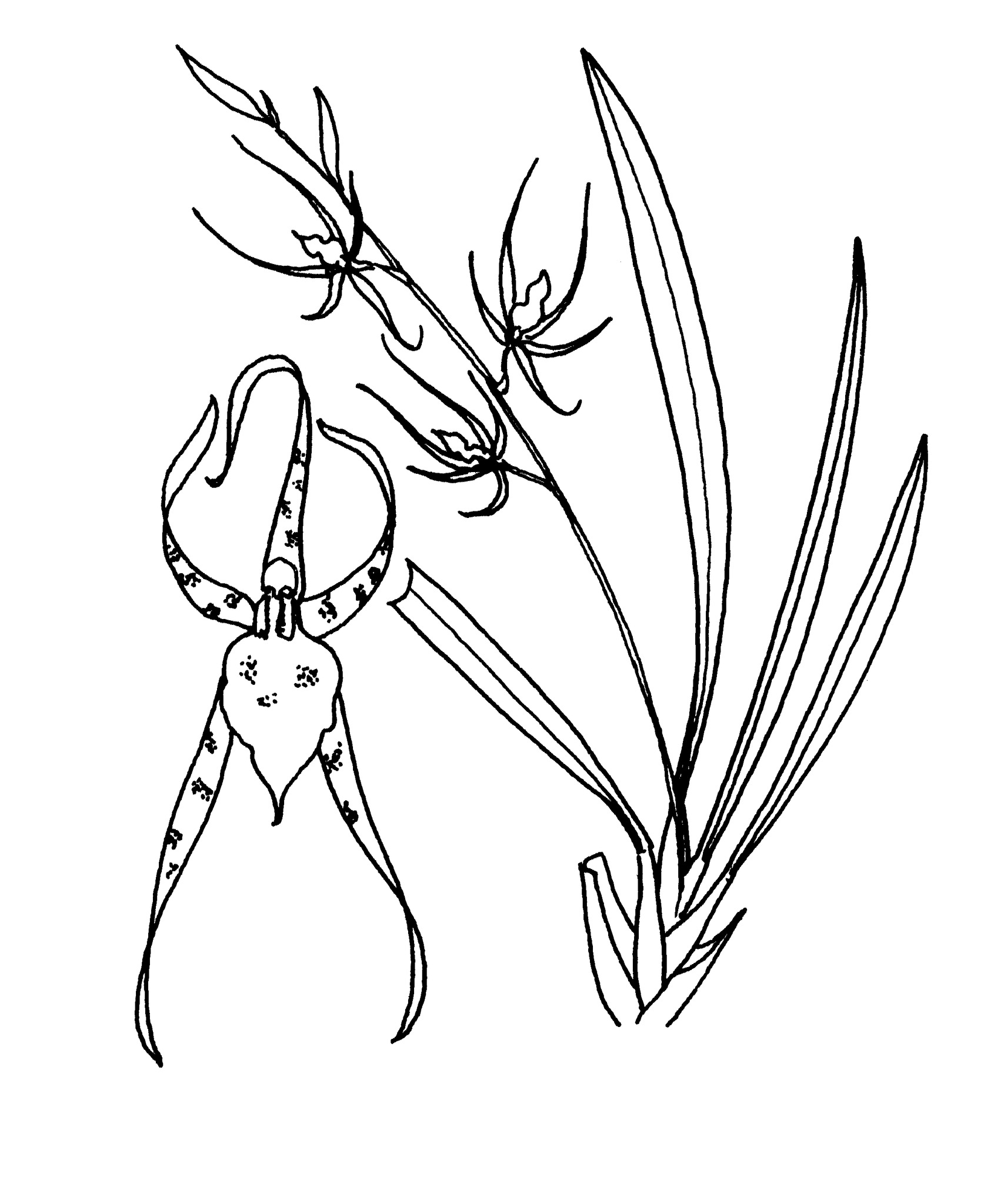
After William Brass, 18th to 19th century botanical illustrator who collected plants in Guinea and S Africa.
Epiphytic, epilithic or terrestrial herbs, sympodial, with stout, creeping or ascending rhizomes. Stems thickened into ovoid to cylindrical pseudobulbs, bases sheathed, well spaced. Leaves apical, 1?3, leathery, strap-like. Inflorescences basal racemes, rarely panicles, erect or arching. Flowers resupinate, few-many, small to large, yellow to greenish with white or reddish markings. Sepals similar, free, slender. Petals similar to sepals but smaller, free. Labellum entire or obscurely 3-lobed, often 2-ridged at base. Column short, erect. Pollinia 2, waxy.
About 25 species from tropical N, C and S America.
Often large spidery mottled flowers.
Source: (2005). Orchidaceae. In: . Horticultural Flora of South-eastern Australia. Volume 5. Flowering plants. Monocotyledons. The identification of garden and cultivated plants. University of New South Wales Press.
